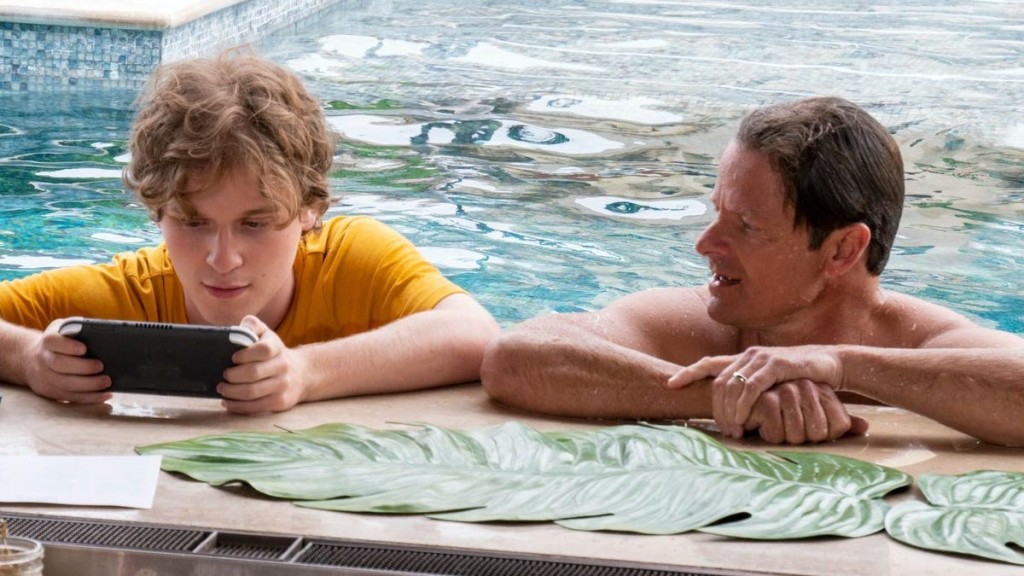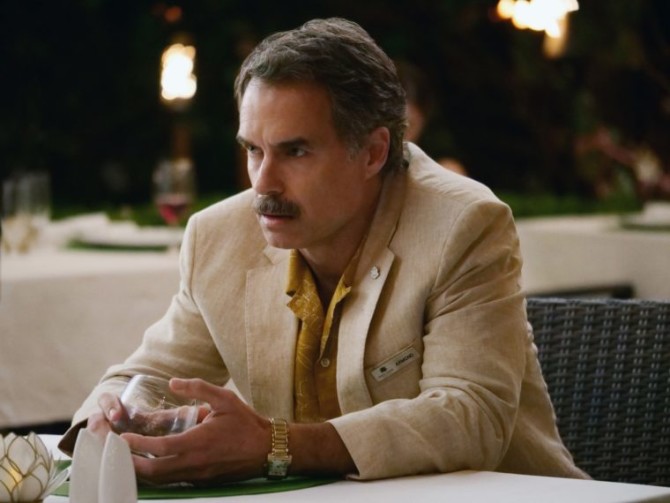You gotta love it. Even MORE White Lotus talk!
Today, we’re going all in on CHARACTER RELATIONSHIPS. Let’s get into it!
When we think about characters, we tend to think about them as individuals. Which makes sense. Every person is an individual. But when it comes to dramatic writing, you should never think of your character in a vacuum. You should think of them in relation to the characters that that they’ll be interacting with over the course of your story. If a character is the yin, you need another character to fill the yang. And I don’t think many writers take that into consideration. They just sort of come up with each character individually then “see what happens” when they write the story.
Actually, let me back up for a second.
You explore character through three main avenues. Avenue 1 is internal. As human beings, we are in constant conflict with ourselves. We are being held back by doubt, by fear, by the things that have happened in our past. All of that equates to an internal struggle. Dramatic writing is about coming up with scenarios to challenge characters to see if they can overcome that struggle.
Avenue 2 is external. This includes anything that the external world throws at the character. The purest expression of this is an action movie. Characters are routinely beat up, shot at, chased. They must take on tsunamis, aliens, robots, and even giant starfish. External character conflict is considered the least interesting of the three avenues of character conflict because it doesn’t really make you feel anything. It’s more about hitting you on a visceral level.
Finally, we have Avenue 3, which is interpersonal conflict. This is where we get into the yin and the yang. Your character is the yin. But they cannot have an interpersonal conflict until you pair them up with the yang (another character). Interpersonal conflicts work best when you create a SPECIFIC PROBLEM between the characters. The more specific you get, the better the reader understands the conflict and what needs to be resolved. This is the avenue we’re going to talk about today because White Lotus does this as well as any show I’ve ever seen.
Before we get started, it’s important to note that some characters will have MULTIPLE interpersonal conflicts while others will have a single interpersonal conflict. If a character does have two or more interpersonal conflicts, one of those might be a lot bigger than the others. Which is okay. As long as each interpersonal conflict contains entertainment value, you’re good. That is the endgame here. These conflicts are not for your own personal curiosity. They’re for the audience to be entertained by. Never forget that.
Okay, let’s start with, hands down, the best interpersonal conflict in the show, which is Shane (the asshole husband) and Armond (the recovering addict hotel manager). This relationship shows us just how entertaining interpersonal conflicts can be. If you find the right combination, you get fireworks on the page.
The way White sets this is up is that Shane realizes that even though he paid for the best room in the hotel (the Pineapple Suite), he and his wife have been placed in a different suite. So he goes to Armond to complain. Armond tells Shane that they have the “best” room because it faces the ocean. The Pineapple Suite, while bigger, doesn’t have an ocean view. This isn’t what Shane wants to hear. But Armond tells him it wouldn’t matter even if Shane *had* booked the Pineapple Suite (which Armond insists he hasn’t) because a German couple is in the Pineapple Suite all week anyway. After a frustrated Shane leaves, Armond confides to a co-worker that he may have screwed up and double-booked the Pineapple Suite.
This conflict sets up about ten great scenes throughout the show. We know that Shane is a pit bull. He wants that Pineapple Suite. But, more than that, he believes that Armond is lying to him and possibly double-booked the suite, and wants to prove it. What White does so brilliantly is he lets the audience in on a secret – that Armond *did* double-book the Pineapple Suite, but he’s not going to admit that. This sets up a scenario by which we’re curious whether Shane is going to be able to prove what we know – which is that Armond screwed him over.
You’ll note that this conflict is testing each character’s INTERNAL CONFLICT. Shane’s flaw is his stubbornness, his determination to prove that he’s right above all else. He could let this go at any time and have a great honeymoon but his stubbornness won’t allow him to. Conversely, Armond’s flaw is his pride. Even when he knows he’s wrong, it’s more important that he not give in to an entitled rich guest than admit his mistake. So their conflict with one another is basically a test as to who is going to overcome their flaw and do the right thing. The fact that neither of them give in is why their storyline ends so tragically.
Remember, though, not every interpersonal conflict should revolve around hatred. In fact, some of the most interesting interpersonal conflicts occur beneath the surface and are more of a psychological chess match. That’s what we get in the relationship between Olivia (the bitchy rich 19 year old daughter) and the friend she’s brought on the trip, Paula (mixed-race, comes from more of a working-class family).
When we first meet these two, they seem like the closest characters on the show. They bond by making disparaging jokes about the other hotel guests. But the more we get to know about these two, the more we realize that their friendship is complicated. For example, when Paula meets a handsome guy who works at the hotel, instead of telling Olivia about him, she waits until Olivia is asleep every night then sneaks out to be with him.
The conflicts at play here are more complicated than the one between Shane and Armond because they’re beneath the surface. Basically, Olivia’s flaw is her need for control. She is not happy in this friendship unless she’s controlling it. That’s why she gets so upset when Paula sneaks out at night to visit someone else. Paula is now enjoying the company of someone besides Olivia, and Olivia doesn’t like that.
Paula’s flaw is her inability to stand up for herself. We learn that Olivia has not been the best friend to Paula. She slept with Paula’s last boyfriend while they were together. Any self-respecting person would’ve ended the friendship with Olivia once that happened. But Paula, probably because of what she gains by having a friend as rich and influential as Olivia, decided not to make a big stink out of it.
At any point in this story, Paula could stand up to Olivia and call her out for the way she’s treated her, as well as the way she treats everyone. But Paula is afraid of Olivia and therefore chooses to hurt her passive-aggressively, by helping her island boyfriend steal a bunch of money from Olivia’s family. Again, because neither character is able to overcome their flaw, the interpersonal conflict results in someone’s life being ruined forever.
There are 15-20 different ongoing interpersonal conflicts in this show and I wish I had time to cover them all but I don’t. So we’ll finish with another understated interpersonal conflict because I don’t think most writers understand that there *is* conflict in this next situation – that of Mark (the father) connecting with Quinn (his 15 year old son).
When you first look at this dynamic, you don’t see conflict because the intent is positive. Mark WANTS to connect with his son by scuba-diving with him – which requires them to take a 3-day course together. A quick note here. It’s always a good idea to create a structure around the conflict if possible. If you’re just trying to explore their conflict through random conversations back at the suite or during dinner, their storyline isn’t going to feel as clear. The scuba-diving angle is what gives this relationship journey FORM.
Getting back to Mark and Quinn. It’s not like Quinn hates his dad or anything. So there isn’t some deep-set unfixable issue between the two. So where does the conflict come from? Because, remember, if you’re not exploring SOME LEVEL OF CONFLICT in a relationship, the scenes are going to be boring.
The conflict on Quinn’s side is that he doesn’t know how to connect with anyone. His social anxiety is so severe (he may even be on the spectrum) that any sort of emotional interaction for him is a challenge. On Mark’s end, he just doesn’t know what buttons to push to connect with his son, which exacerbates the problem.
Even though the conflict is light, we know it’s there because we’re rooting for them to connect. If we didn’t feel that, there wouldn’t be any conflict. Remember, conflict is an IMBALANCE in the relationship. The absence of conflict is when BALANCE is achieved. So if there’s any relationship you’re writing where balance has already been achieved, chances are that relationship is conflict-free and, therefore, boring to watch.
Guys, if you can master the art of creating interpersonal conflict between characters, your writing is going to skyrocket. Character interaction is the heart of storytelling, especially when it comes to TV. So if you can figure out some point of contention in a relationship and then explore that contention in all of their scenes, you’re going to find that your scenes become a lot more compelling. Because the conflict is already baked into the relationship, as opposed to you having to generate it each and every time you write a scene. White Lotus is a masterclass in this. Go watch it for yourselves and focus on how every single relationship has a conflict it’s exploring.
Oh no! Tomorrow is our last, “White Lotus is The Greatest Show Ever” post! What are you guys going to do when it’s over?



